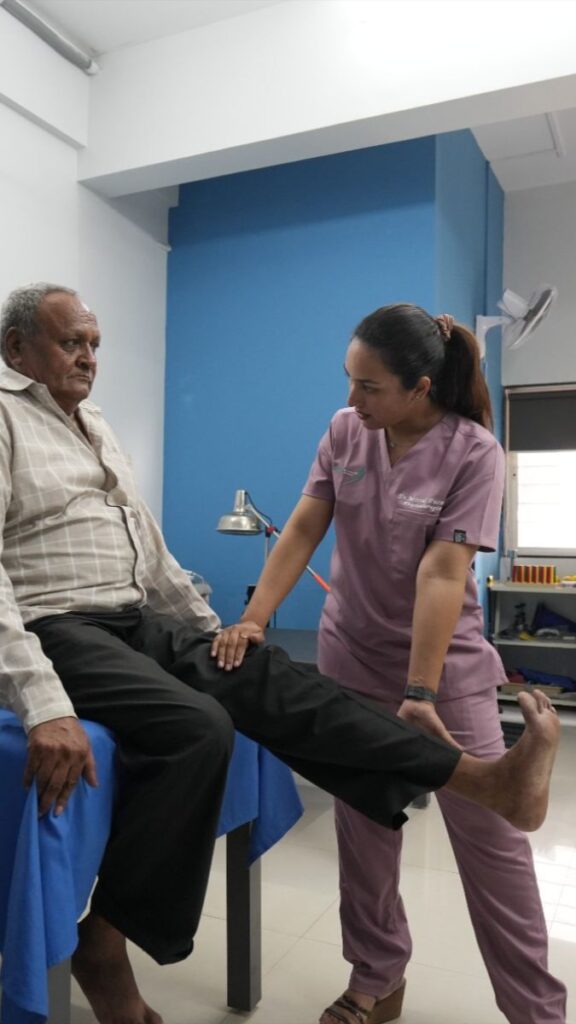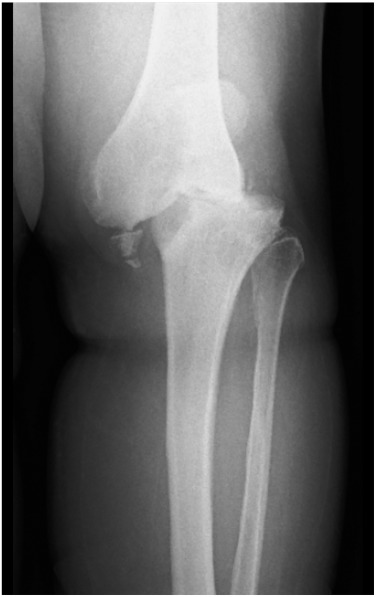Introduction:
Charcot Knee is the chronic, progressive, non-infectious destruction of bone and joints, in patients with peripheral neuropathy, as first described by William Musgrave in 1703 . Charcot neuroarthropathy of the knee (CK) is a rare and under-researched area, resulting in considerable morbidity. However, it is a common foot and ankle related pathology, especially in those with diabetes mellitus.
Definition:
Charcot knee is a chronic, progressive degenerative arthropathy characterizes by joint deformity, destruction and instability, resulting from impaired pain sensation and proprioception , most commonly due to peripheral neuropathy.
Etiology:
The primary etiology of charcot knee is any condition causing peripheral neuropathy, which compromises the joint’s protective reflexes and awareness of injury. Common causes include:
- Diabetes Mellitus: The most frequent cause, accounting for a significant majority of cases.
- Spinal cord injury: Leading to loss of sensation below the level of injury.
- Tabes Dorsalis(Syphilis): Historically a common cause.
- Leprosy: Another infectious cause of neuropathy.
- Alcoholism: Can cause peripheral neuropathy.
- Syringomyelia: A neurological disorder characterized by a fluid- filled cyst within the spinal cord.

Signs & Symptoms:
- Skin Changes: Scar or ulcerations may develop due to altered biomechanics and pressure points.
- Clicking: During movement.
- Joint Instability: Leading to difficulty gait pattern.
- Diminished or Absence pain: Despite severe damage.
- Warm, swollen joint: Often the initial noticeable sign.
- Progressive deformity: Visibly altering the knee’s alignment.

Physiotherapy Management:
Physiotherapy plays a crucial role in managing charcot knee, focusing on:
- Therapeutic Exercises (Non- weight Bearing): Maintaining range of motion and strengthening surrounding muscles without stressing the joint.
- Diabetic Foot Care:
- Inspect your feet daily, Check for cuts, blisters, redness, swelling or nail problems and inform doctor if you notice any changes.
- Bathe feet in lukewarm water.
- Wash feet using a soft washcloth or sponge. Dry by blotting or patting and carefully dry between the toes.
- Moisturize your feet but not between toes as it can cause fungal infections.
- Never treat corns or calluses yourself.
- Wear clean, dry socks and change them daily.
- Wear socks to bed.
- Shake out your shoes and feel the inside before wearing to check for any foreign bodies.
- Keep your feet warm and dry. Consider using an antiperspirant on soles.
- Never walk barefoot.
- Keep blood sugar levels under control.
- Cut nails carefully.
- Get periodic foot exams.
- Diabetes Complication and Amputation Prevention.
- Shoes and Orthotics for Diabetics
- Weight-Bearing Modification: Use of crutches( axillary, elbow) ,wheelchairs or walkers to offload the affected joint.
- Orthotics and Bracing: Custom-made knee braces(e.g., total contact orthosis) to stabilize the joint and prevent further deformity.
- Pain Management modalities: Low level LESER irradiation for 10-15 minutes/session on the ulcer.
- Balance and Proprioception: If appropriate and safe , to improve overall stability.
Complications:
- Weak bones
- Deformity: Rocker Bottom.
- Bones may press against shoes.
- Ankle may become twisted and unsteady.
- Toe curls.
Dietary Considerations :
A balanced diabetic-friendly diet rich in fiber, lean protein, and anti-inflammatory foods such as leafy greens, berries, and omega-3 fatty acids can support joint health and improve recovery. Limiting refined sugar and maintaining stable blood glucose levels is essential to prevent further joint damage.
At Aaziban Rehabilitation Centre, nutritional guidance is an integral part of our multidisciplinary approach—ensuring that patients not only heal physically but also regain strength through mindful eating and balanced nutrition.
Conclusion:
Charcot Knee is a challenging condition requiring early diagnosis and comprehensive management. While joint destruction can be severe, a multidisciplinary approach, with physiotherapy as a cornerstone, can significantly improve functional outcomes, prevent further progression and enhance the patient,s quality of life.

